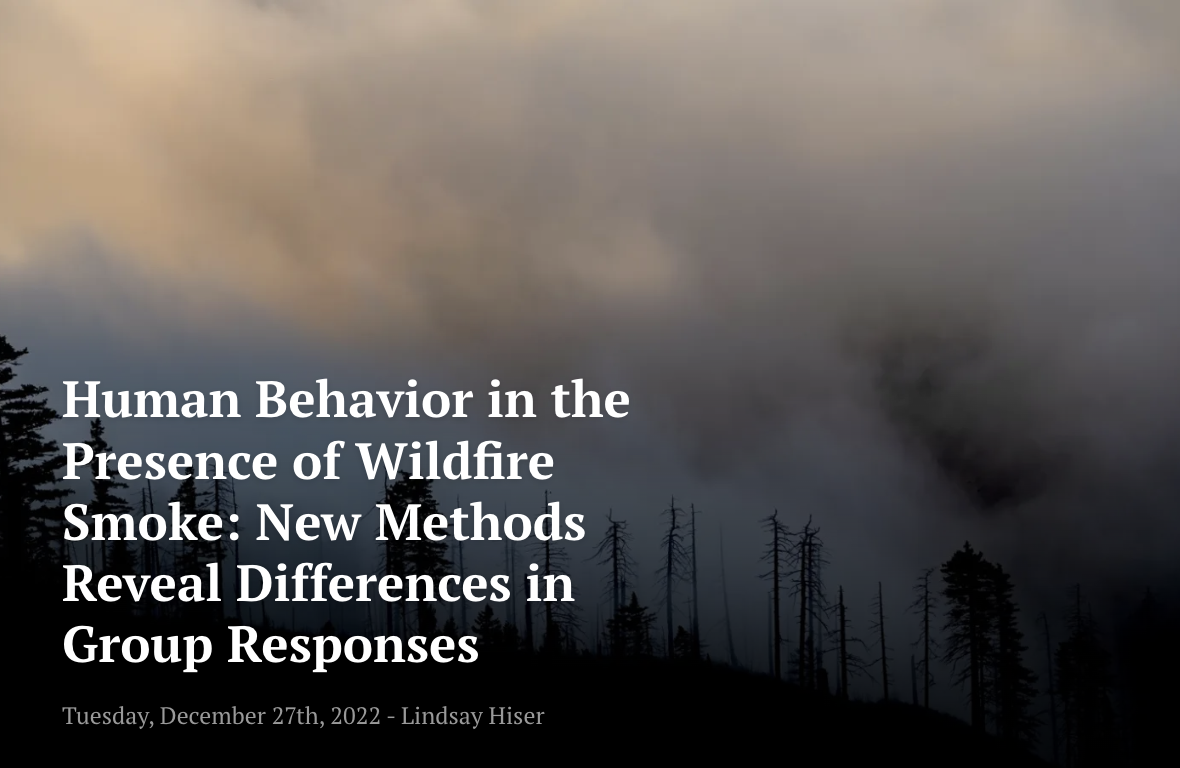I have a new article, Human Behavior in the Presence of Wildfire Smoke, published in the Chicago Policy Review discussing research exploring differences in group responses to wildfire smoke exposure. This research has implications for how policymakers can improve risk mitigation measures to consider the realities of disadvantaged groups.
The original research, published in Nature Human Behavior, illustrates how climate policy can benefit from behavioral insights. The researchers found that behavioral responses to wildfire smoke were largely income-dependent, and argued that current policy fails to consider the resistance that certain groups face when adopting public guidance.
For example, lower income households were less likely to shelter at home on heavy smoke days or consider purchasing protective equipment than their higher income counterparts. This is consistent with previous research concluding that lower income groups have a hard time deviating from regular routines and acuiring helpful resources (like protective equipment) in times of crisis. Rather than emphasize self-protecting measures like shelter-at-home and acuisition of protective equipment, policymakers could instead focus on equipping residents with necessary equipment and ensuring safe shelter for those who cannot avoid leaving home.
I was also intrigued by the researchers’ use of non-traditional data sources. With the help of cell phone location, social media activity, and online search queries, the authors presented more nuanced behavioral insights that differed by income group. Harnessing such creativity in data collection may yield more insightful findings that can, in turn, encourage more effective and equitable policy.
Read the article in the Chicago Policy Review.

